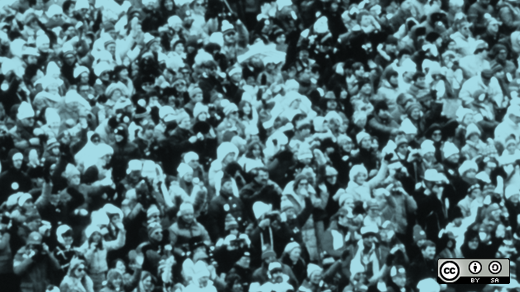Recently the LibreOffice project released version 5.0 of their cross-platform office suite. The new release brings together a raft of features for a comprehensive office suite that runs across Linux, Windows, Mac, and increasingly the mobile space.
Saying LibreOffice or OpenOffice to people can lead to interesting reactions. For some people, LibreOffice is the darling of the open source world, and for others, it is a crappy Microsoft Office alternative that they look down on.
I believe that LibreOffice plays an important function in the world, and one that spans beyond the mere function of an office suite. Before we get to that though, I think looking back through the tremendous journey that led to the LibreOffice project we know today is important.
Going back in time
The story begins back in 1985 when Marco Börries created StarWriter for the Zilog Z80. He later formed StarDivision and started building what we now consider to be a modern office suite. The fruits of this effort was StarOffice, which featured a word processor, spreadsheet, presentations, database, drawing, formula, and other tools.
Back in the early days of Linux, StarOffice was the only serious office suite available for the burgeoning operating system. Sure, StarOffice was clunky and ugly, but it worked and filled an important role for new Linux users. I will never forget being able to create a poster for my Linux user group and print it out, which felt like a big step forward for Linux.
In 1999, Sun bought StarDivision for $73.5 million, and according to the press, buying the company was cheaper than buying Microsoft Office licenses for Sun employees. This naturally came with a key benefit: Sun now owned an office suite.
With Sun getting deeper and deeper into open source, the company open sourced StarOffice in 2000 and it became the OpenOffice.org project. At first this was primarily a code dump, but then a community started forming around OpenOffice.org and tried to evolve into a true open source community. Soon, because I was in close contact with OpenOffice.org and Sun community members back then, I saw things start to get complicated.
Tough times
Although we owe a debt of gratitude to Sun for open sourcing StarOffice, that effort involved releasing a massive, gnarly ball of monolithic code that would have put off even the most ardent of programmers. The people who joined the OpenOffice.org project in those early days took on the complicated, unrewarding, and mentally taxing job of understanding the spaghetti codebase and making sense of it for future development. They really were true heroes of open source.
Ximian was one of the companies involved with the project. Michael Meeks, a core member of the OpenOffice.org project, created a special patch-set called ooo-build, which made managing the codebase on Linux easier. This resulted in a special software package called go-ooo, which included some features not in the upstream OpenOffice.org codebase.
Around this time, Sun was contributing less code to OpenOffice.org, presumably as financial and product goals shifted. To make matters worse, the stewards of OpenOffice.org at Sun also were becoming less responsive to outside contributions. This created an environment in which Michael Meeks and other developers were doing hard work to create an office suite the open source world could be proud of, but that effort was falling on somewhat deaf ears upstream.
I remember this time vividly. Michael Meeks was doing everything that he could to inspire and encourage Sun to manage OpenOffice.org in a way that was more in line with an open source project. I even spent time with Michael trying to bridge the relationship with key members at Sun, and trying to get Canonical behind this work. Sadly, much of these efforts didn't bear much fruit. To be fair, I was unaware of much of the internal considerations going on at Sun, so their reluctance to engage may have also been a result of other forces, such as external management groups or constrained engineering resources.
In early 2010, Oracle acquired Sun. This sent shock waves throughout the open source world and may have been the straw that broke the camel's back. Later that year, The Document Foundation was announced as a new host for a new derivative of OpenOffice.org called LibreOffice. This new project would be the open source project that Meeks and company had lobbied for for so long.
New era
Since those early days, the LibreOffice project has gone from strength to strength. That huge, monolithic codebase has been modularized, updated, and refined. The cross-platform support has been expanded, new features added, cruft removed, and a revised sense of simplicity and usability has been applied. In addition to this, a new community was born, developer summits and conferences were founded, sponsors sourced, and sub-communities—such as documentation writers, translators, artists, designers, and more—created.
To look at LibreOffice today and compare it to Microsoft Office can be tempting. Sure, LibreOffice does not provide the same level of features and finesse Microsoft's suite may boast, but when I think of the before and after vanity shots of the suite back in 1999 and today, what the community has accomplished is phenomenal. Developing LibreOffice has been hard, technically challenging, and at times demotivating work, and contributors' efforts can be seen by millions of users across the world.
More than a suite
In addition to the tremendous technical and community accomplishments of LibreOffice, the project plays a big role beyond the open source space. We are experiencing a tremendous community renaissance across the world. People are getting together to create, share, and collaborate in new and interesting ways. One thing I have learned during my career is that any mission or vision is possible when we have the right collection of tools, knowledge, and people. The tools piece is where LibreOffice fits in.
Back in the early days of Linux and open source, a core set of tools made much of what we have today possible. Those tools included gcc, make, binutils, and other pieces of the GNU system. Without those freely accessible tools, early developers wouldn't have had the nuts and bolts they needed to do great things.
Open source communities are not only about developing software. Communities are local groups, activism efforts, collaborative writing, data modeling, and more. As was the case with early open source projects, open tools and open, downloadable, hackable content is key. LibreOffice is providing the open tool that can inspire a generation to create open content in open formats.
For example, to help build coordinated local groups around the world, we should have a downloadable kit of materials groups can use to create posters, documents, name badges, stickers, and more. Providing the material is one thing, but providing the material in a format that can be used, edited, and customized with a free tool means that communities don't need to worry about funding a suite of proprietary office software.
A combination of open formats and open tools have led to the collaborative revolution we see today. Although looking at LibreOffice as merely a free Microsoft Office equivalent may be tempting, this line of thinking underestimates the incredible role it can play in the wider, community revolution outside of software development.
As I wrap up this column tonight, I will be toasting my friends in the LibreOffice project. You are the essence of what I love in open source: the kindness, expertise, and sense of community that makes it all so special. Thank you for your devotion and efforts.
Degrees
This article is part of Jono Bacon's Six Degrees column, where he shares his thoughts and perspectives on culture, communities, and trends in open source.







20 Comments